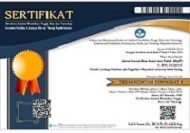Measuring the task force of sexual violence prevention and response effectiveness in Jakarta State University
DOI:
https://doi.org/10.33474/jisop.v4i1.15822Keywords:
Effectiveness, Permendikbudristek, Sexual Violence RegulationAbstract
The issue of the Regulation of the Minister of Education, Culture, Research and Technology of the Republic of Indonesia Number 30 of 2021 proves the seriousness of the government in dealing with sexual violence in universities. One form of prevention in this Ministerial Regulation is the establishment of a Task Force for the Prevention and Handling of Sexual Violence. This task force aims to be the main factor of dealing with various forms of sexual violence that can occur in universities, all includes prevention, reporting, to handling. Based on the importance of the existence of the task force, this study aims to analyze the effectiveness of establishing The Task Force of the Sexual Violence Prevention and Response in universities based on the Regulation of the Ministry of Education, Culture, Research, and Technology of the Republic of Indonesia in 2021. This study uses a mixture of quantitative and qualitative methods with data samples taken from the State University of Jakarta. This research data collection technique was carried out by distributing questionnaires and conducting a literature review using the theory of effectiveness and the use of law and the concept of roles. This research found that through quantitative research, there is significant correlation between the principles of the Sexual Prevention and Response, The Task Force’s main responsibility, and the objectives of this ministrial regulation. Through qualitative research, from the organizational component and the implimentation of gender-based regulation, this ministrial regulation is proven to be an effective regulation to handling sexual violence.
References
Adawiyah, R., Luayyin, R. H., & Ardli, M. N. (2022). Analisis Permendikbud Ristek No 30 Tahun 2021 dan Konstruksi Sosial Kekerasan Seksual di Perguruan Tinggi Perspektif Sosiologis. Al Qodiri: Jurnal Pendidikan, Sosial Dan Keagamaan, 19(3), 781–796. https://doi.org/10.53515/qodiri.2022.19.3.781-796
Banyard, V. L. (2014). Improving college campus-based prevention of violence against women: a strategic plan for research built on multipronged practices and policies. Trauma, Violence, & Abuse, 15(4), 339–351. https://doi.org/10.1177/1524838014521027
Banyard, V. L., Ward, S., Cohn, E. S., Plante, E. G., Moorhead, C., & Walsh, W. (2007). Unwanted sexual contact on campus: A comparison of women’s and men’s experiences. Violence and Victims, 22(1), 52–70. https://doi.org/10.1891/vv-v22i1a004
Bergeron, M., Goyer, M.-F., Hébert, M., & Ricci, S. (2019). Sexual Violence on University Campuses: Differences and Similarities in the Experiences of Students, Professors and Employees. Canadian Journal of Higher Education/Revue Canadienne d’enseignement Supérieur, 49(3), 88–103. https://doi.org/10.47678/cjhe.v49i3.188284
Cleere, C., & Lynn, S. J. (2013). Acknowledged versus unacknowledged sexual assault among college women. Journal of Interpersonal Violence, 28(12), 2593–2611. https://doi.org/10.1177/0886260513479033
Combs, J. L., Jordan, C. E., & Smith, G. T. (2014). Individual differences in personality predict externalizing versus internalizing outcomes following sexual assault. Psychological Trauma: Theory, Research, Practice, and Policy, 6(4), 375–383. https://doi.org/10.1037/a0032978
Creswell, J. W., & Creswell, J. D. (2017). Research design: Qualitative, quantitative, and mixed methods approaches. Sage publications.
Greeson, M. R., & Campbell, R. (2014). Coordinated Community Efforts to Respond to Sexual Assault: A National Study of Sexual Assault Response Team Implementation. Journal of Interpersonal Violence, 30(14), 2470–2487. https://doi.org/10.1177/0886260514553119
Indrawan, D., & Jalilah, S. R. (2021). Metode Kombinasi/Campuran Bentuk Integrasi Dalam Penelitian. Jurnal Studi Guru Dan Pembelajaran, 4(3), 735–739. https://doi.org/10.30605/jsgp.4.3.2021.1452
Indriastuti, D. R. (2012). Efektivitas Organisasional. Jurnal Ekonomi Dan Kewirausahaan, 12(1), 22–36. https://ejurnal.unisri.ac.id/index.php/Ekonomi/article/view/339
Inspektorat Jenderal Kementerian Pendidikan, kebudayaan, R. dan T. (2021). Mendikbudristek: Ada Darurat Kekerasan Seksual di Lingkungan Perguruan Tinggi! Inspektorat Jenderal Kementerian Pendidikan, Kebudayaan, Riset Dan Teknologi.
Jessup-Anger, J. E., Lopez, E., & Koss, M. P. (2018). History of sexual violence in higher education. New Directions for Student Services.
Kemendikbudristek. (2021). Abstrak Permen 30 Tahun 2021 Tentang Pencegahan Dan Penanganan Kekerasan Seksual Di Lingkungan Perguruan Tinggi. 5, 6.
Khan, S. R., Hirsch, J. S., Wambold, A., & Mellins, C. A. (2018). “I Didn’t Want To Be’That Girlâ€â€™: The Social Risks of Labeling, Telling, and Reporting Sexual Assault. Sociological Science, 5(19), 432–460. https://doi.org/10.15195/v5.a19
Komnas Perempuan Komisi Nasional Anti Kekerasan Terhadap Perempuan. (2021). Siaran Pers Memperingati Hari Ibu, 93 Tahun Gerakan Perempuan Indonesia “Melanjutkan Juang Hari Ibu: Prioritaskan Perlindungan Perempuan dari Kekerasan Seksual.†In Memperingati Hari Ibu, 93 Tahun Gerakan Perempuan Indonesia. https://komnasperempuan.go.id/siaran-pers-detail/siaran-pers-memperingati-hari-ibu-93-tahun-gerakan-perempuan-indonesia-melanjutkan-juang-hari-ibu-prioritaskan-perlindungan-perempuan-dari-kekerasan-seksual
Mabachi, N. M., Quiason, M., Doan, A. E., & Carlson, J. (2020). Developing an effective campus sexual assault prevention task force: lessons learned from multiple Midwestern universities. Health Education & Behavior, 47(15), 17S-25S. https://doi.org/10.1177/1090198120909809
Nation, M., Crusto, C., Wandersman, A., Kumpfer, K. L., Seybolt, D., Morrissey-Kane, E., & Davino, K. (2003). What works in prevention: Principles of effective prevention programs. The American Psychologist, 58(6–7), 449=456. https://doi.org/10.1037/0003-066x.58.6-7.449
Nikmatullah. (2020). Demi Nama Baik Kampus VS Perlindungan Korban: Kasus Kekerasan Seksual di Kampus. Qawwam: Journal for Gender Mainstreaming, 14(2), 37–53. https://doi.org/10.20414/qawwam.v14i2.2875
Peraturan Rektor Universitas Negeri Jakarta Nomor 7 Tahun 2021 Tentang Pencegahan dan Penanganan Kekerasan Seksual di Lingkungan Universitas Negeri Jakarta, (2021).
Priyanto, D. (2009). Mandiri Belajar Dengan Program SPSS. Jakarta Selatan: Penerbit Buku Kita.
Ramadhan, M. S. (2021). Disebut Kasus Lama, Ini 5 Fakta Oknum Dosen UNJ Lecehkan Mahasiswi. Medcom.Id. https://www.medcom.id/nasional/peristiwa/lKYr2pVN-disebut-kasus-lama-ini-5-fakta-oknum-dosen-unj-lecehkan-mahasiswi
Ridwan. (2005). Belajar Mudah Penelitian Untuk Guru Karyawan dan Peneliti Mudah. Bandung, Perpustakaan Nasional RI: Katalog Dalam Penerbitan (KDT), 138.
Sahfitri, V. (2012). Pengukuran Efektifitas Sistem Informasi. Jurnal Ilmiah Matrik, 14(3), 205–216. http://jurnal.binadarma.ac.id/index.php/jurnalmatrik/article/view/305
Senn, C. Y., Eliasziw, M., Barata, P. C., Thurston, W. E., Newby-Clark, I. R., Radtke, H. L., & Hobden, K. L. (2015). Efficacy of a Sexual Assault Resistance Program for University Women. The New England Journal of Medicine, 11(June), 2326–2335. https://doi.org/10.1056/NEJMsa1411131
Suherman, A., Aryani, L., & Yulyana, E. (2021). Analisis Fungsi Peraturan Mentri Pendidikan, Kebudayaan, Riset dan Teknologi Nomor 30 Tahun 2021 dalam Mencegah Kekerasan Seksusal di Kampus. Jurnal Ilmiah Wahana Pendidikan, 7(7), 173–182. https://doi.org/10.5281/zenodo.5704133
Zuhra, W. U. N. (2019). Testimoni Kekerasan Seksual: 174 Penyintas, 79 Kampus, 29 Kota.
Downloads
Published
How to Cite
Issue
Section
License
.


_-_Copy.jpg)





